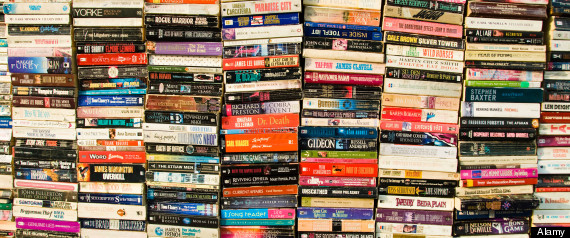Review of the Modes of Books
Sunday, November 23, 2014
Saturday, November 22, 2014
Summary of Paper/ Hardback Books
The most common mode to read is a book is use a paper/ hardback printed book. This method has been used since the 1400s, and is the most widely used even today. Paperback books are relatively inexpensive and easy to mass produce.
Hardback books are more expensive, but they are more durable and their value can increase in time. But most people use paperback or hardback books because they are the most readily available and inexpensive. Furthermore, if you use a library then you can read the book without having to purchase it, an option most people use.
Friday, November 21, 2014
Summary of Digital / Audio Books
In today's digital age, we have two more commonly used modes to experience a book.
Through digital means, usually on an e-reader, or though an audio book.
The e-reader is by far the newest method, and has the most potential. People like the idea of being a to start reading a new book without having to go the library, or wait for it in the mail. However, the price of an e-reader can easily exceed $100, but the books usually cost less than paperback does. Lastly, their is a loss of the tactile feel, something that will drive some readers nuts.
The audio books has been around since the early 1900s, sush as the Talking Books Programs (established 1931). But they became a commercial market in the 1970s due to the growing use of cassette tapes. Since then their use has only grown as the digital age has made distribution only easier. However, they have always cost about the same as a hardback book. But they allow you to experience a book without having to use your eyes or hands, very useful if you have to multitask.
Overall, digital and audio books are a luxury, something that some people cannot afford.
Thursday, November 20, 2014
Pros and Cons of the Main Modes
Hardback Books
Pros:
Durable (Has a very long shelf life, and can withstand long term use)Tactile (The feel of actually holding a book, and being able to flip from page to another freely)
Tradition (A mode that has been in use for hundreds of years)
Sentimental Value (A person can become attached to particular book)
Monetary Value (The value of the hardback can increase in time)
Cons:
Expensive (One of the most expensive modes to experience a book)Bulky (Takes up space, requires space and weight considerations for storage)*
*Can be inconvenient for transportation, and mass storage requires consideration of space and weight load requirements.
Paperback Books
Pros:
Inexpensive (One of the lest expensive modes to experience a book)
Tactile (The feel of actually holding a book, and being able to flip from page to another freely)
Tradition (A mode that has been in use for many years)
Sentimental Value (A person can become attached to a particular book)
Easily Available (Available at local library or books store)
Cons:
Bulky (Takes up space, requires space and weight considerations for storage)
Flimsy (Can be easily damaged, especial the binding and cover)
Digital Books
Pros:
Inexpensive (Individual digital books usually cost less than paperback books)
Portable (Very easy to carry around)
Easily Distributed (Digital books are distributed over the internet, making it easy to purchase and begin reading a new book within a minute)
Cons:
Fragile (The e-reader can be easily damaged)
Expensive (The e-reader itself can easily cost over $100)
Short Shelf Life (The e-reader's shelf life depends on the battier's shelf life and compatibility with current operating systems)
Intangible (Loss of the tactile feel of holding a book)
Audio Books
Pros:
Multitask (Very easy to listen and focus on other tasks at the same time)
Portable (Very easy to carry around)
Easily Distributed (Audio books are distributed over the internet, making it easy to purchase and begin reading a new book within a minute)
Cons:
Fragile (The hardware can be easily damaged)
Expensive (An individual audio book can cost more than a hard back and the hardware can easily cost over $100; furthermore, one of the most expensive modes to experience a book)
Short Shelf Life (The hardware's shelf life depends on the battier's shelf life and compatibility with current operating systems)
Intangible (Loss of the tactile feel of holding a book)
Wednesday, November 19, 2014
Conclusion
Each mode that is used to experience a book is different. Yet each mode has been designed for a certain purpose. Comparing the different modes together cannot state which is the better mode to use to experience a book, it can only give us an idea of which mode will personally suit us best in a particular situation.
And with that said, this blog has reviewed the main modes of experiencing a book, and the pros and cons of each method.







